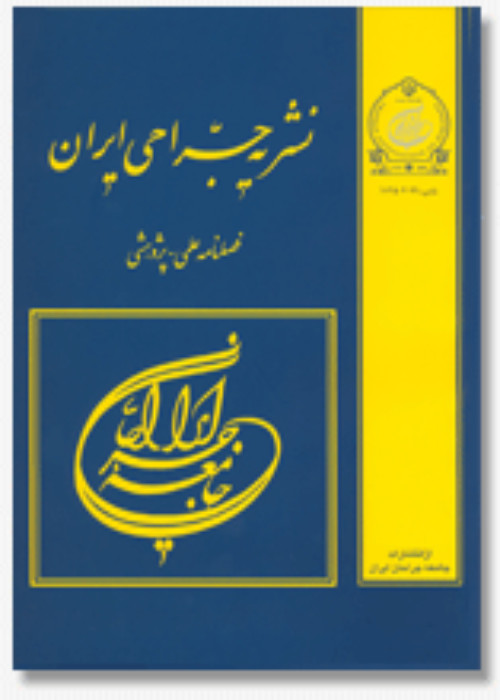Comparative Assessment between Laparoscopic and Open Appendectomy at Besat Hospital of Hamedan, Iran in 2008
Author(s):
Abstract:
Introduction &
Objective
Acute appendicitis is one of the most common problems requiring emergency surgery. Although more than 20 years has elapsed since the introduction of laparoscopic appendectomy, there is no consensus on its advantages and disadvantages compared to the conventional technique. Recent studies have shown significant advantages of laparoscopic appendectomy with respect to the length of hospital stay, postoperative pain and infectious complications. These findings have been challenged by other authors who observed no significant differences in the outcome between the two procedures. In the present study, we aimed to compare the laparoscopic approach and the open technique in the treatment of acute appendicitis.Materials and Methods
70 patients with diagnosis of acute appendicitis, who referred to Besat Hospital of Hamadan, were included in this study. They were randomly divided into two groups of 35 patients, One group underwent Open appendectomy (group A), and the other group, had laparoscopic appendectomy (group B). The parameters examined in this study included patient’s characteristics (age, sex), operation time (from skin incision to wound closure), postoperative pain, length of hospital stay, return to work and postoperative complications. The data were analyzed by the SPSS 17 software.Results
There were no significant differences between two groups with respect to gender and age. The mean operation time was significantly different in the two groups (it was 55.71 ± 16.09 min in the open group vs 64.42 ± 17.14 min in the laparoscopic group; P = 0.032). Also the length of hospital stay time was significantly different in the two groups (54.77 ± 27.02 hours in the open group vs 30.25 ± 11.85 hours in the laparoscopic group; P < 0.001). Open appendectomy was associated with a significantly higher incidence of wound infection compared with the laparoscopic group (14.3% vs 0%; P = 0.027).Patients went back to work 7.8 days after their operation in open group, and 5.22 days after their operation in the laparoscopic group (P < 0.001). Also, the average dose of patient’s requirements for analgesia, with pain after surgical treatment, was significantly different in the two groups (P = 0.027).Conclusions
In the present study, we were able to demonstrate the superiority of the laparoscopic approach in terms of hospital stay, postoperative pain, return to work and wound infection.Keywords:
Language:
Persian
Published:
Iranian Journal of Surgery, Volume:21 Issue: 3, 2013
Page:
55
magiran.com/p1229458
دانلود و مطالعه متن این مقاله با یکی از روشهای زیر امکان پذیر است:
اشتراک شخصی
با عضویت و پرداخت آنلاین حق اشتراک یکساله به مبلغ 1,390,000ريال میتوانید 70 عنوان مطلب دانلود کنید!
اشتراک سازمانی
به کتابخانه دانشگاه یا محل کار خود پیشنهاد کنید تا اشتراک سازمانی این پایگاه را برای دسترسی نامحدود همه کاربران به متن مطالب تهیه نمایند!
توجه!
- حق عضویت دریافتی صرف حمایت از نشریات عضو و نگهداری، تکمیل و توسعه مگیران میشود.
- پرداخت حق اشتراک و دانلود مقالات اجازه بازنشر آن در سایر رسانههای چاپی و دیجیتال را به کاربر نمیدهد.
In order to view content subscription is required
Personal subscription
Subscribe magiran.com for 70 € euros via PayPal and download 70 articles during a year.
Organization subscription
Please contact us to subscribe your university or library for unlimited access!


